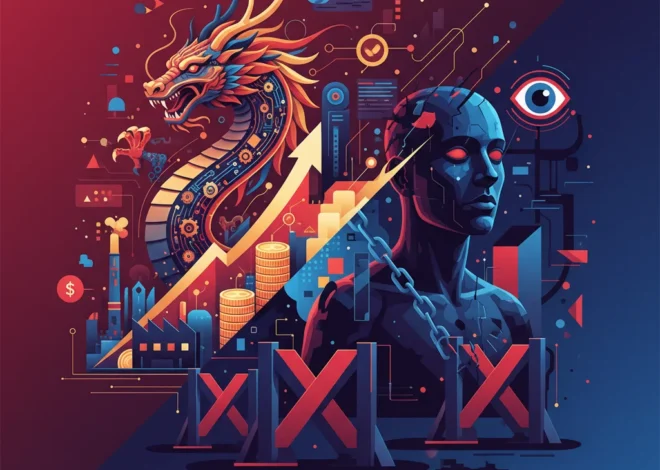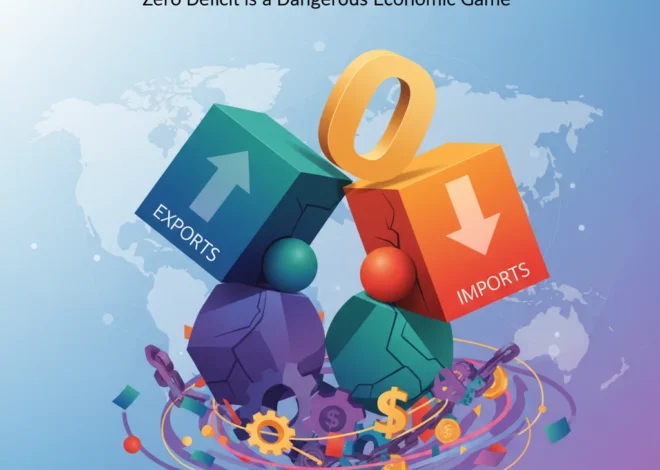
The Adoption Principle: A Human-Centric Model for Long-Term Value Investing
The Unseen Parallels Between Building a Family and Building a Fortune
In North Yorkshire, a couple named Emma and Mike have embarked on a journey filled with what they describe as immense “laughter and tears.” Their story is not one of a startup launch or a landmark corporate merger, but something far more fundamental: they adopted a pair of siblings. As they advocate for others to consider adoption amidst falling numbers, their experience offers an unexpectedly profound blueprint for success in a domain that seems worlds apart—the volatile and often impersonal landscape of modern finance and investing.
At first glance, the connection seems tenuous. What could the deeply personal commitment of raising children possibly teach seasoned investors, fintech innovators, or leaders navigating a turbulent global economy? The answer is: everything that matters. The principles that guide a successful adoption—long-term commitment, seeing value where others don’t, navigating profound uncertainty, and understanding the importance of a supportive infrastructure—are the very same principles that underpin sustainable, long-term wealth creation. This is the Adoption Principle: a human-centric framework for rethinking our approach to the stock market, technology, and strategic growth.
Beyond the Quarterly Report: The Power of Lifelong Commitment
Emma and Mike’s journey was not a short-term venture. The decision to adopt is a commitment that spans decades, a stark contrast to the high-frequency trading and short-term profit-seeking that often dominate financial headlines. Their “laughter and tears,” as reported by the BBC, mirror the emotional volatility investors experience during market cycles. The elation of a bull run and the despair of a correction are familiar feelings. However, the successful long-term investor, much like an adoptive parent, understands that true value is not measured in daily fluctuations but in generational growth.
This mindset challenges the conventional wisdom of reacting to every market tremor. While a day trader might sell at the first sign of trouble, a long-term investor with a deeply held conviction in their assets holds firm, understanding that periods of difficulty are prerequisites for growth. The adoption journey is fraught with challenges—adjustments, emotional hurdles, and unforeseen complexities. Yet, the commitment is unwavering because the focus is on the ultimate outcome: a thriving, stable family. Similarly, investing in a sound business or a transformative technology requires the fortitude to weather storms, trusting in the fundamental value proposition rather than being swayed by market sentiment. This approach to economics favors resilience over reactivity, a lesson the financial world continuously has to relearn.
Beyond the Backlash: Why Smart Money is Still Betting on Corporate Diversity
Finding Alpha in Overlooked Assets: The Sibling Group Analogy
A crucial aspect of Emma and Mike’s story is their decision to adopt siblings. Sibling groups are often among the most difficult children to place in the adoption system. They are frequently perceived as more complex, more challenging, and a greater commitment. Consequently, they can be overlooked. Yet, the intrinsic value of keeping siblings together—preserving their bond, their history, and their mutual support system—is immeasurable.
This is a perfect parallel to the concept of value investing. Legendary investors build their fortunes by identifying assets the market has misunderstood, undervalued, or dismissed. They look past the superficial complexities to see the underlying, durable strength. A fledgling fintech company with a disruptive but unproven model, a legacy industry stock that has fallen out of favor, or an emerging market bond deemed too risky—these are the “sibling groups” of the financial world. They require more due diligence, a greater appetite for perceived risk, and a longer time horizon, but the potential for outsized returns is immense.
The current landscape of financial technology is rife with such opportunities. While market attention often gravitates towards consumer-facing apps or volatile crypto assets, significant value may lie in the less glamorous B2B infrastructure—the “plumbing” of the financial system. These are the companies, like sibling groups, whose interconnected parts create a whole that is far more valuable and resilient than the market currently recognizes.
The table below illustrates this powerful comparison between overlooked human potential and undervalued financial assets.
| Overlooked Adoption Profile | Parallel Undervalued Asset Class |
|---|---|
| Sibling Groups | Contrarian stocks in mature, stable industries (e.g., industrial manufacturing, consumer staples). |
| Older Children (Ages 10+) | Companies undergoing a long-term, complex turnaround that requires patient capital. |
| Children with Special Needs | Niche B2B fintech or deep-tech ventures with high barriers to entry and non-obvious applications. |
The Essential Infrastructure: Trust, Technology, and Support
No adoption happens in a vacuum. Families like Emma and Mike’s are supported by a robust infrastructure of agencies, social workers, and legal frameworks designed to ensure a successful placement. Organizations like One Adoption North Yorkshire, mentioned in the source article, provide the essential scaffolding of trust, verification, and guidance.
This is directly analogous to the infrastructure that underpins a functioning global economy. The entire system of modern banking, investment, and commerce is built on a foundation of regulatory oversight, legal contracts, and clearinghouses that ensure transactions are settled and promises are kept. When this infrastructure is weak, as seen in financial crises, the entire system is at risk.
Emerging technologies like blockchain are, at their core, attempts to re-imagine this infrastructure of trust. A distributed ledger, in theory, provides an immutable, transparent record of transactions, reducing the need for traditional intermediaries. While its application has been volatile, the underlying goal is to create a more efficient and trustworthy system for exchanging value—the same goal an adoption agency has in creating a stable and trustworthy system for building families. The evolution of financial technology is not just about creating slicker apps; it’s about reinforcing or reinventing the fundamental structures that allow our economic relationships to thrive.
A Contrarian Opportunity in a Declining Market
Perhaps the most urgent part of the original story is the context: the number of adoptions is falling. This decline creates a crisis for children in need of a home. For Emma and Mike, this backdrop wasn’t a deterrent but a call to action. Their decision to adopt in a “down market” is the ultimate contrarian move.
This mirrors one of the most time-tested principles of successful investing: be greedy when others are fearful. When a market is in decline, when headlines are negative, and when general sentiment is low, the majority of participants flee. This is precisely when the greatest opportunities emerge for those who have done their homework and have a long-term perspective. Buying into a declining stock market, investing in a sector undergoing a cyclical downturn, or funding a startup during a “VC winter” requires immense courage and a belief in the fundamental, long-term value that others are too panicked to see.
The falling rate of adoptions is a societal market failure. The “supply” of children needing homes exceeds the “demand” from prospective parents. The call to action from adoptive parents is a plea for more market participants to step in and recognize the profound, non-financial returns available. It’s an investment in social capital, human potential, and the future of the community—a portfolio that yields dividends far beyond any financial statement.
According to the report, there is a significant need for more people to come forward, highlighting a clear gap between societal need and action, much like the gap between a stock’s price and its intrinsic value during a market panic.
Conclusion: The Ultimate Return on Investment
The story of one family’s adoption journey in North Yorkshire is more than a heartwarming anecdote. It is a masterclass in the principles that create enduring value. It teaches us that the most rewarding investments are often long-term, requiring us to navigate volatility with unwavering commitment. It shows us the power of looking beyond surface-level complexity to find profound value where others see only risk. And it reminds us that the strongest ventures are built on an infrastructure of trust and support.
For leaders in finance, investing, and business, the Adoption Principle is a call to integrate a deeper, more human-centric perspective into our strategies. It suggests that the path to sustainable growth and outsized returns lies not in chasing fleeting trends, but in making profound, long-term commitments to undervalued assets—be they companies, technologies, or, most importantly, people. The “laughter and tears” are not bugs in the system; they are features of any journey worth taking. The ultimate ROI is not just a number on a balance sheet, but the creation of something resilient, valuable, and built to last for generations.


